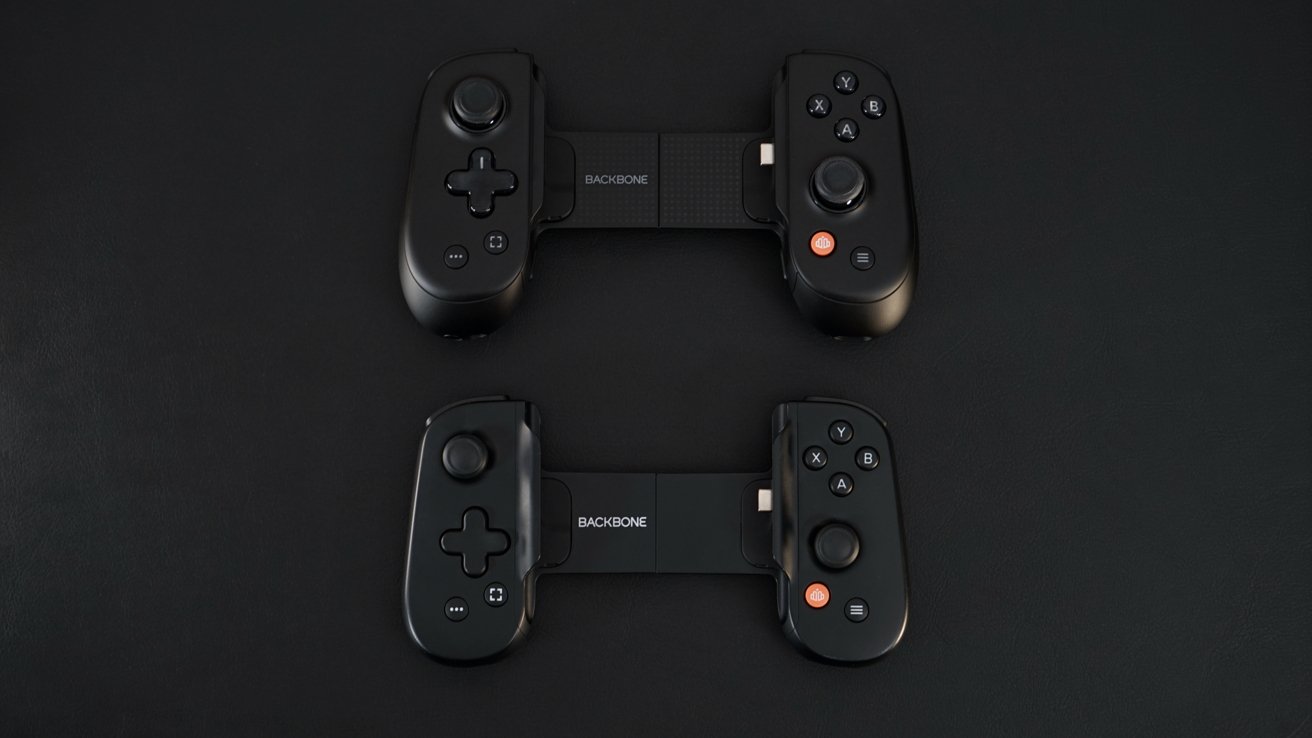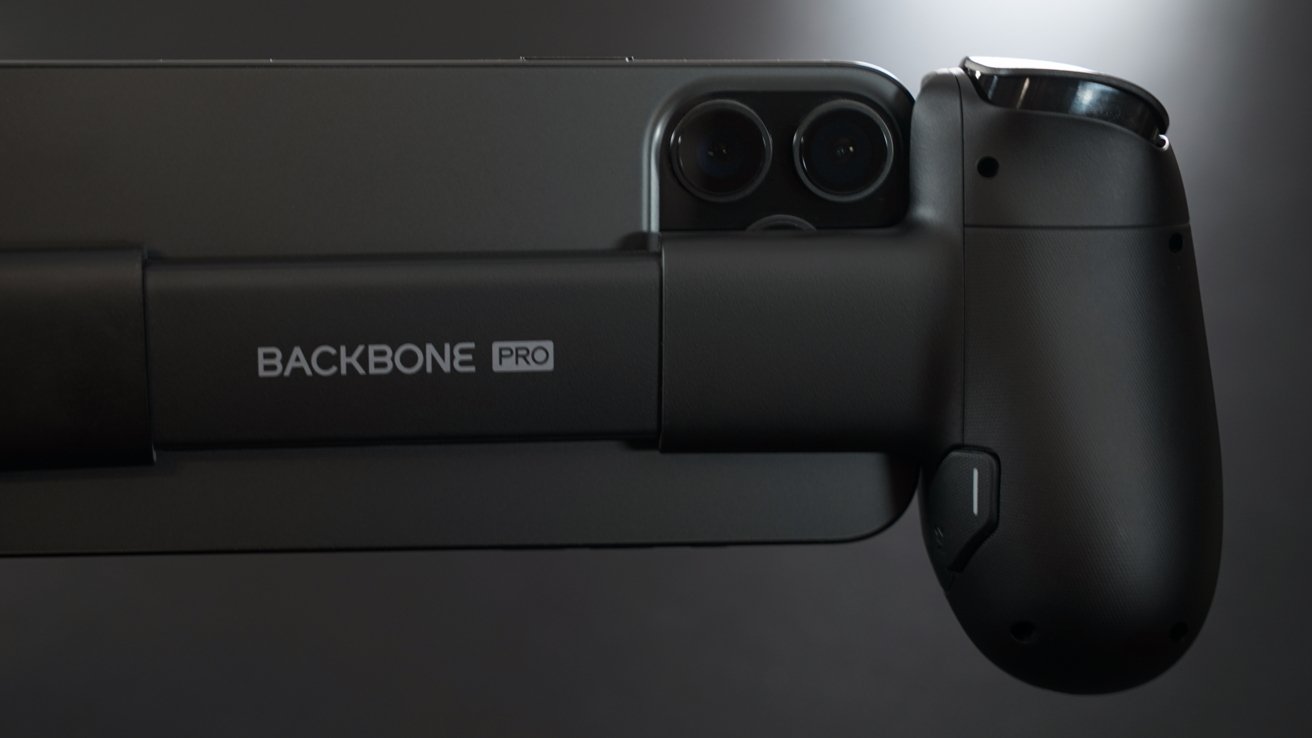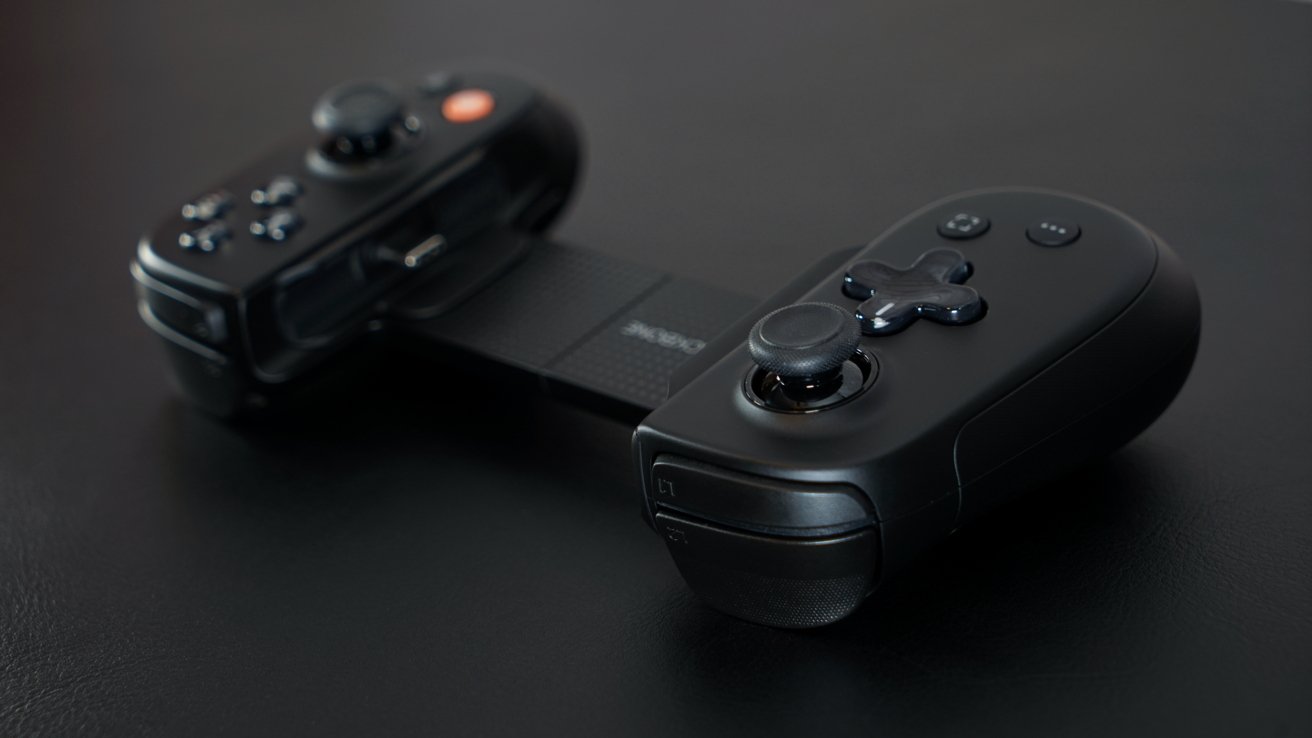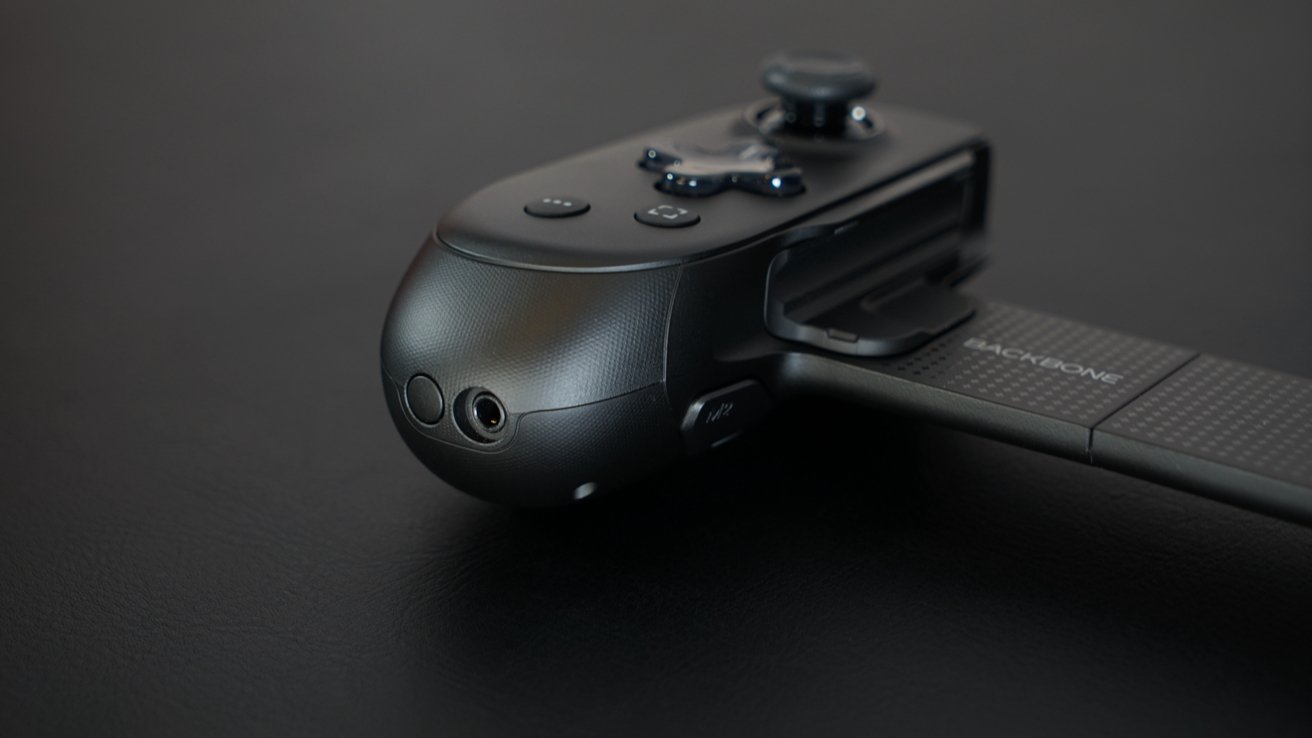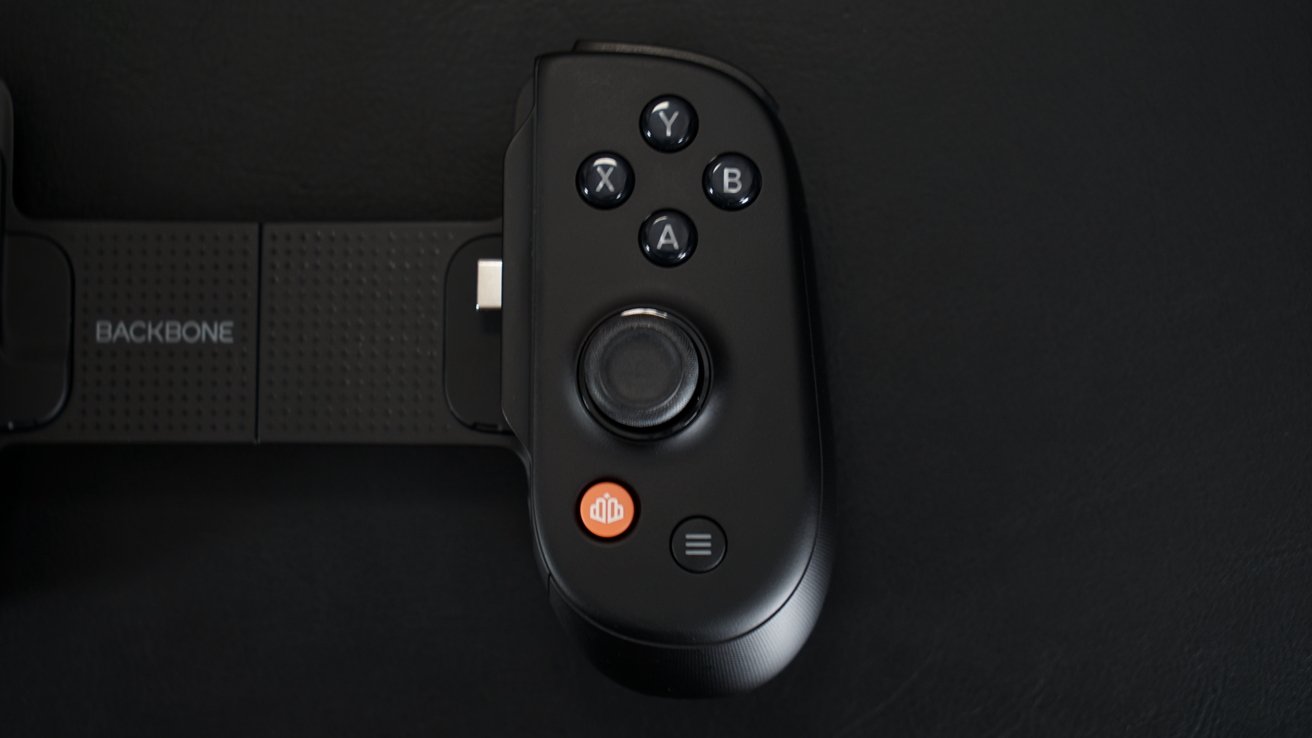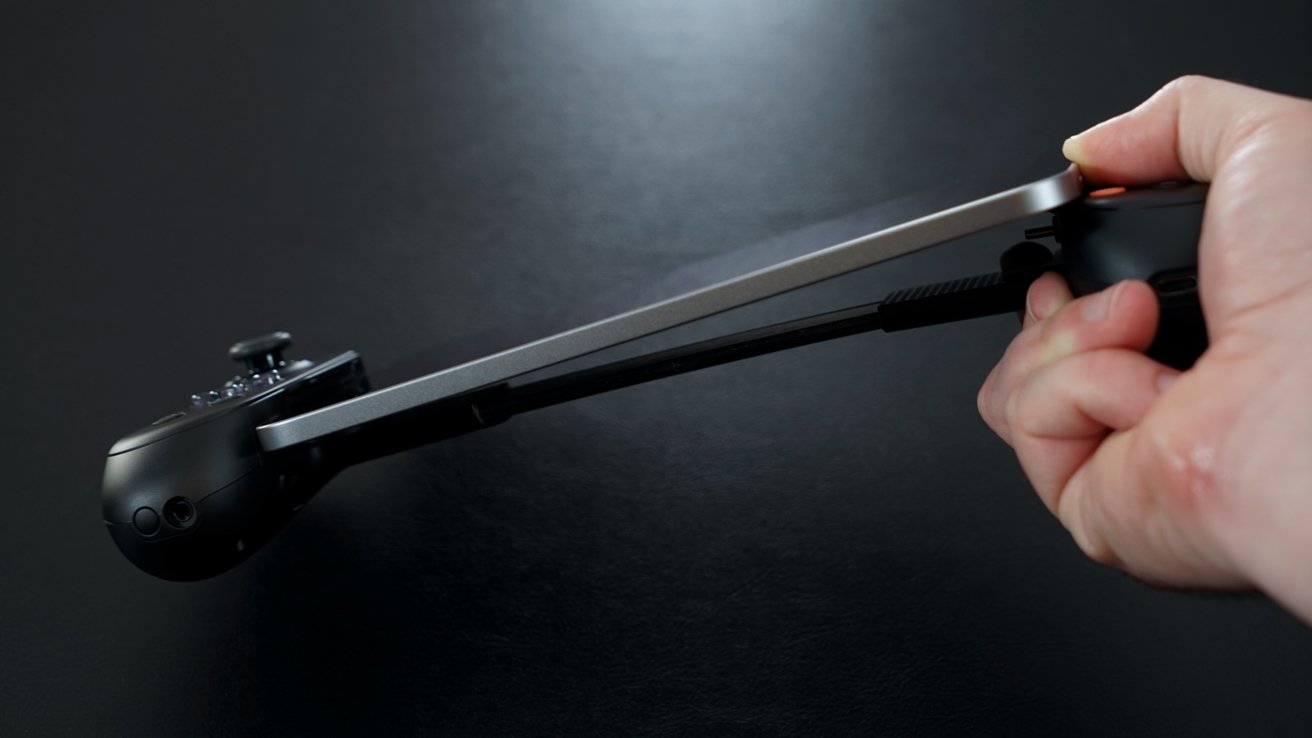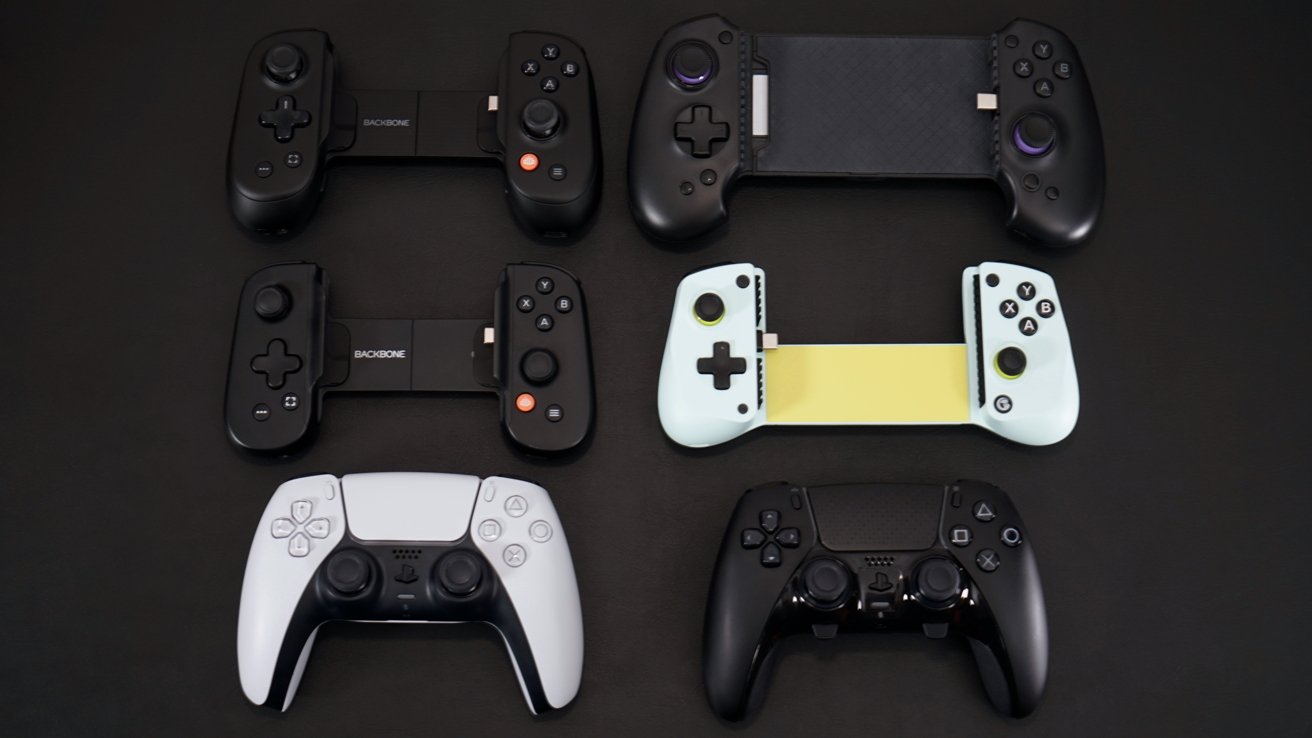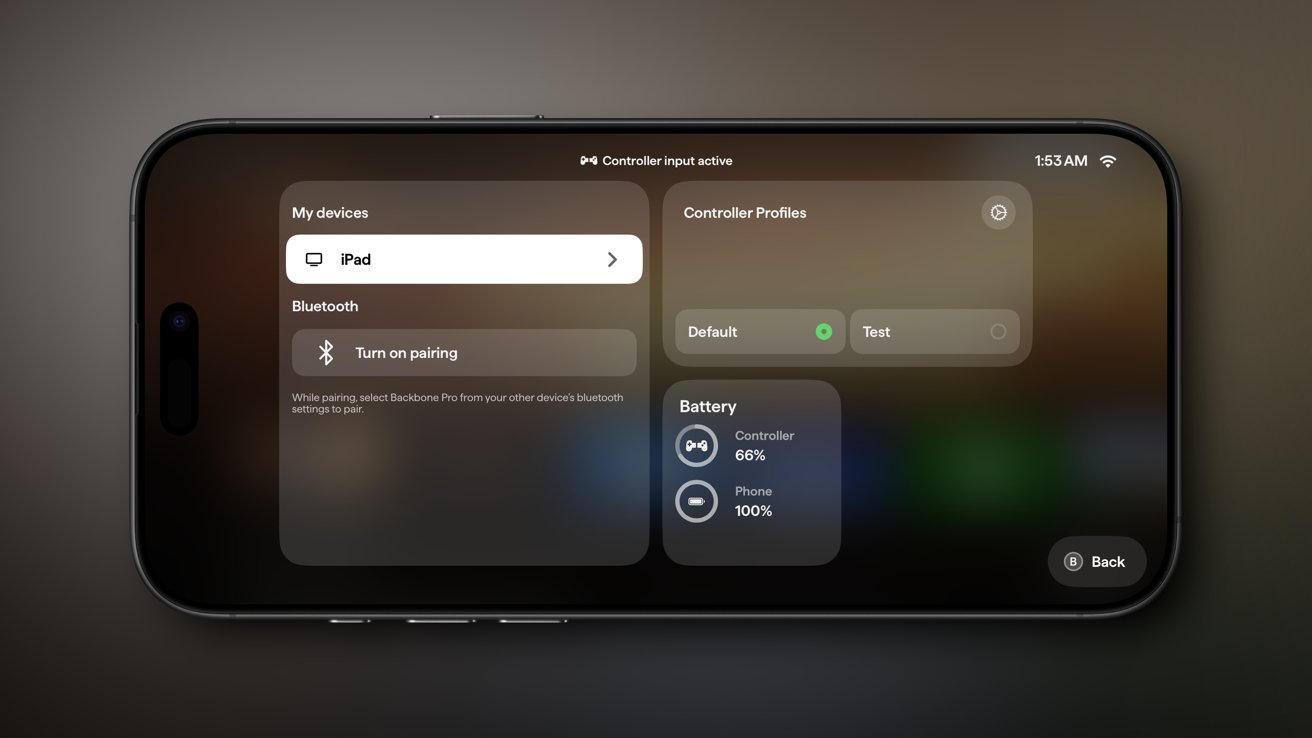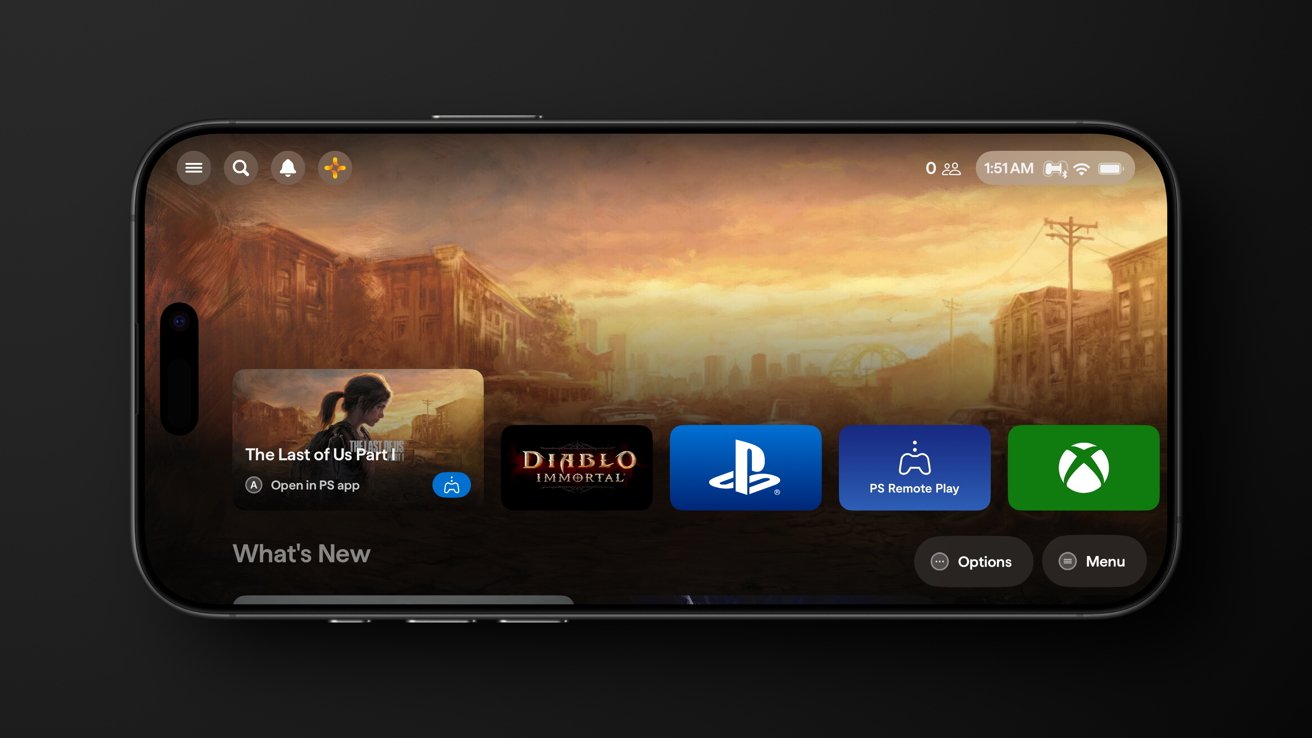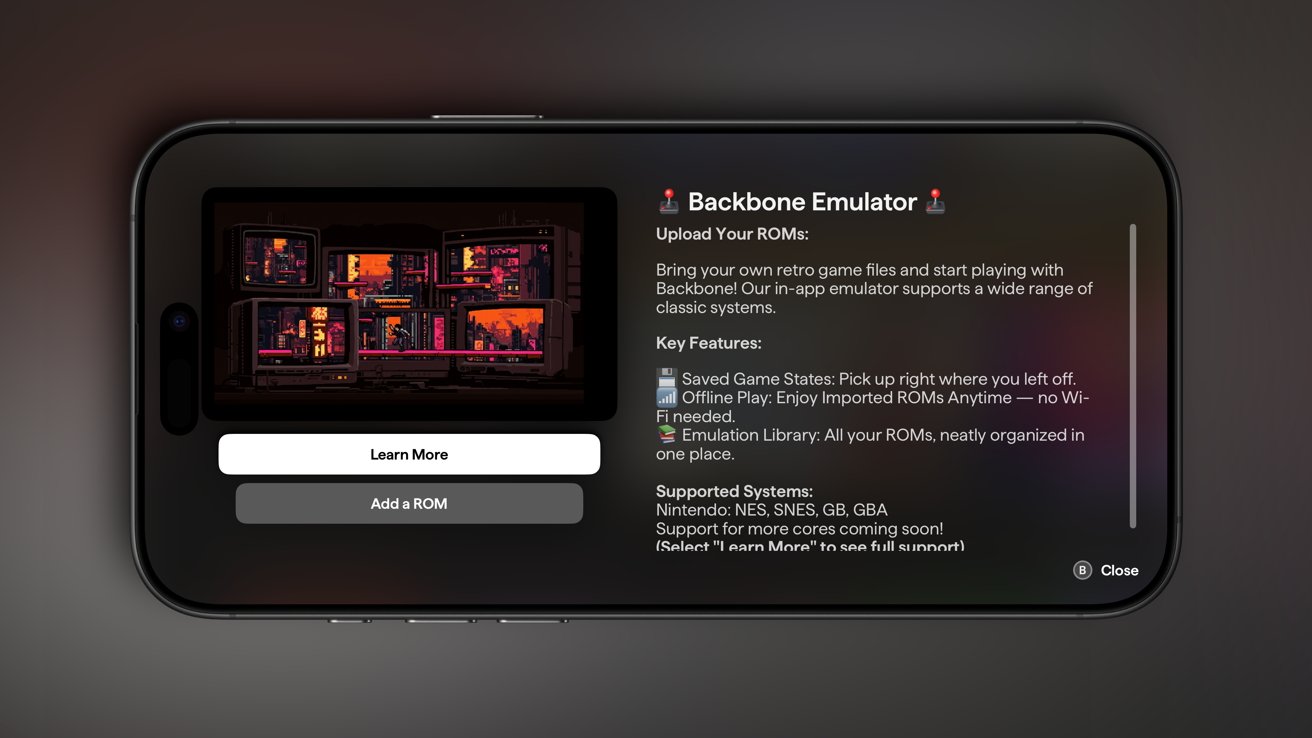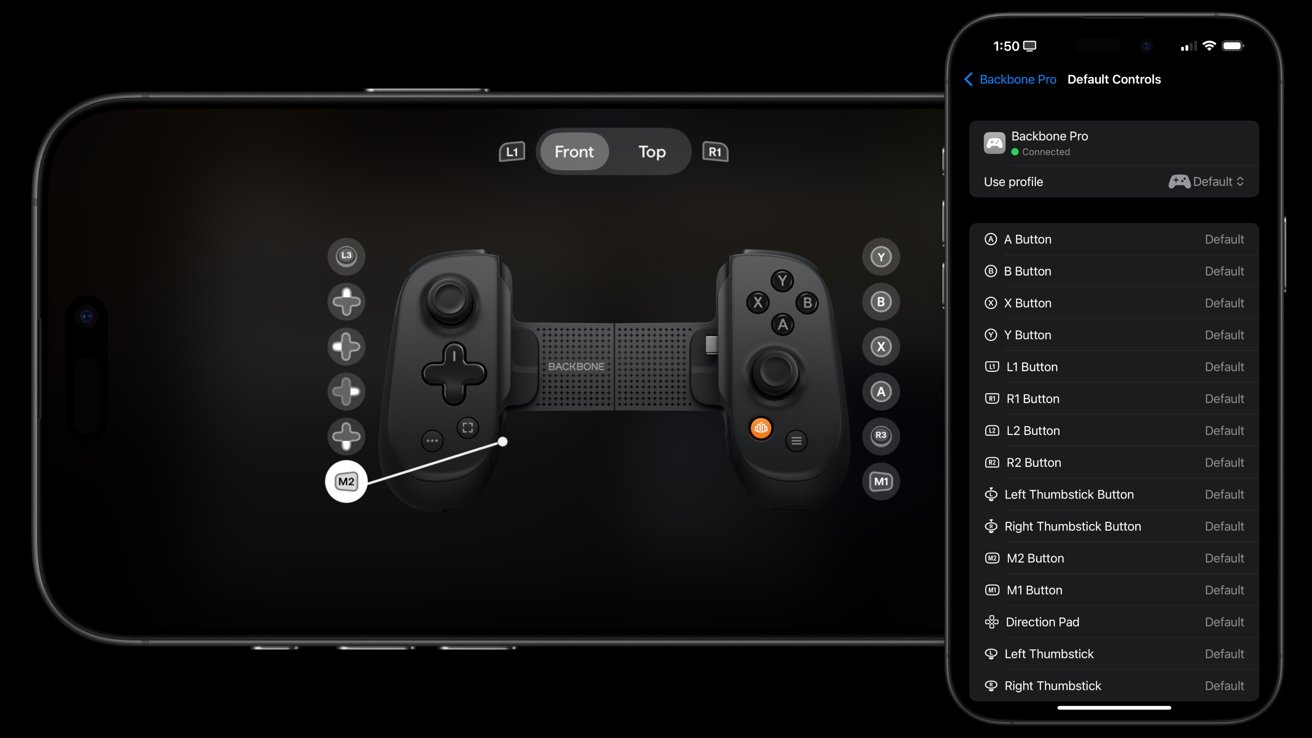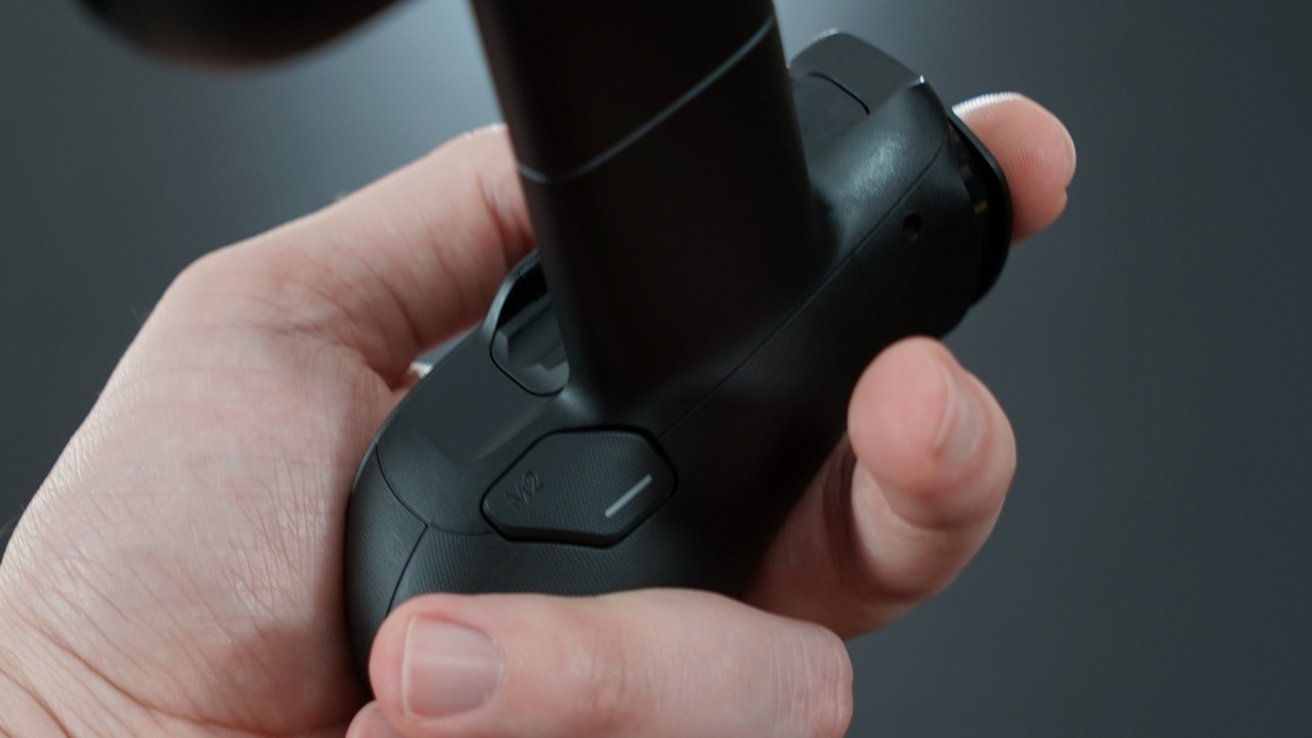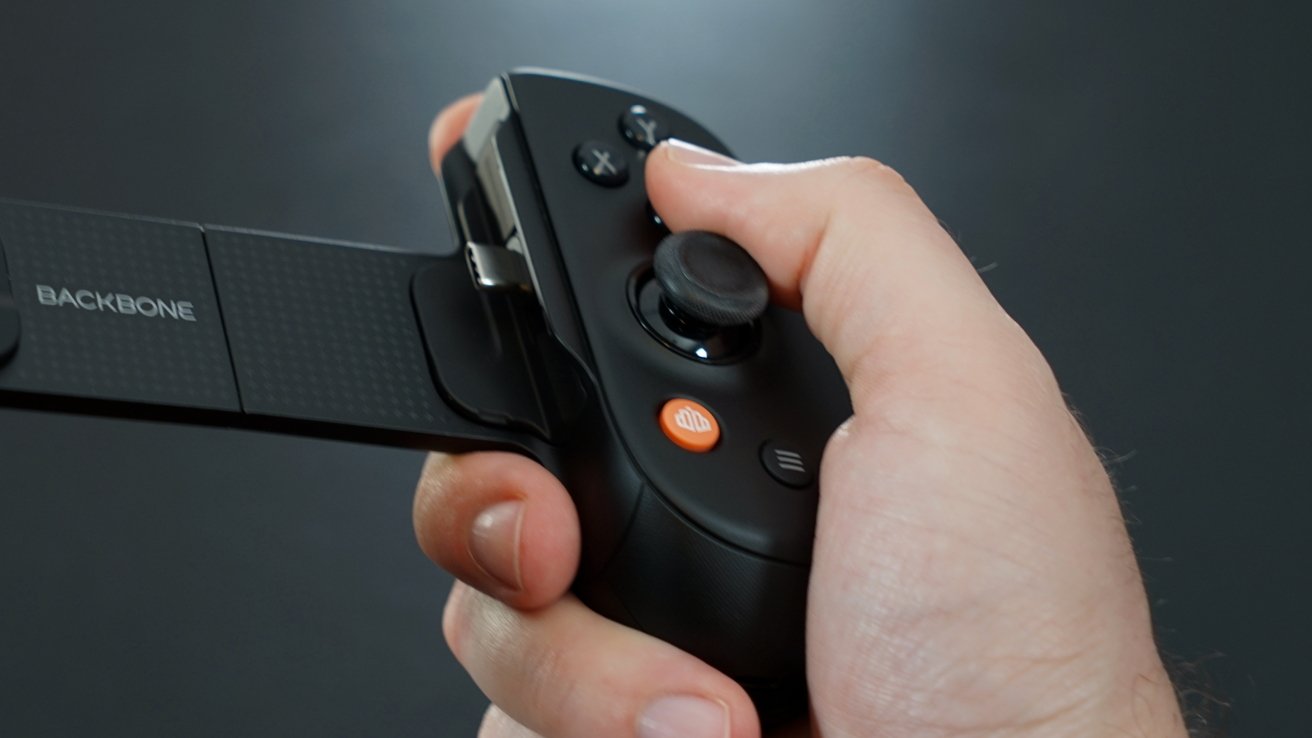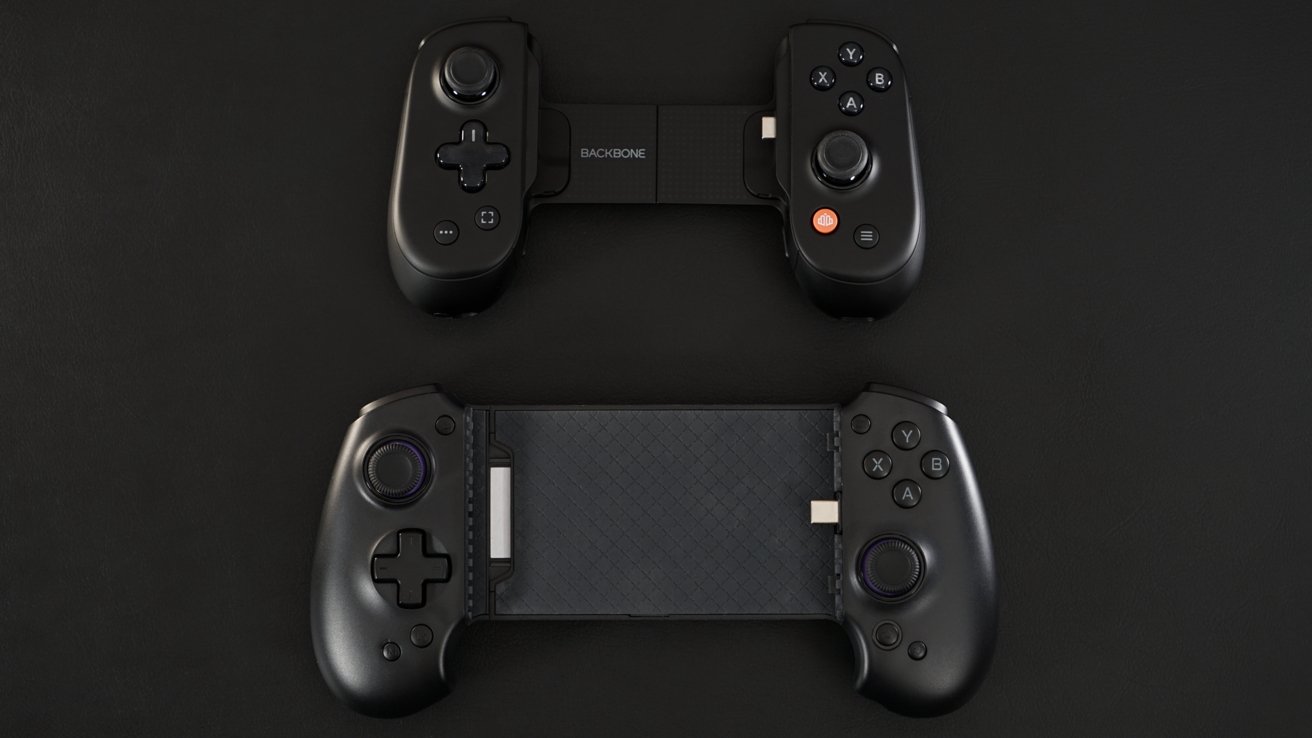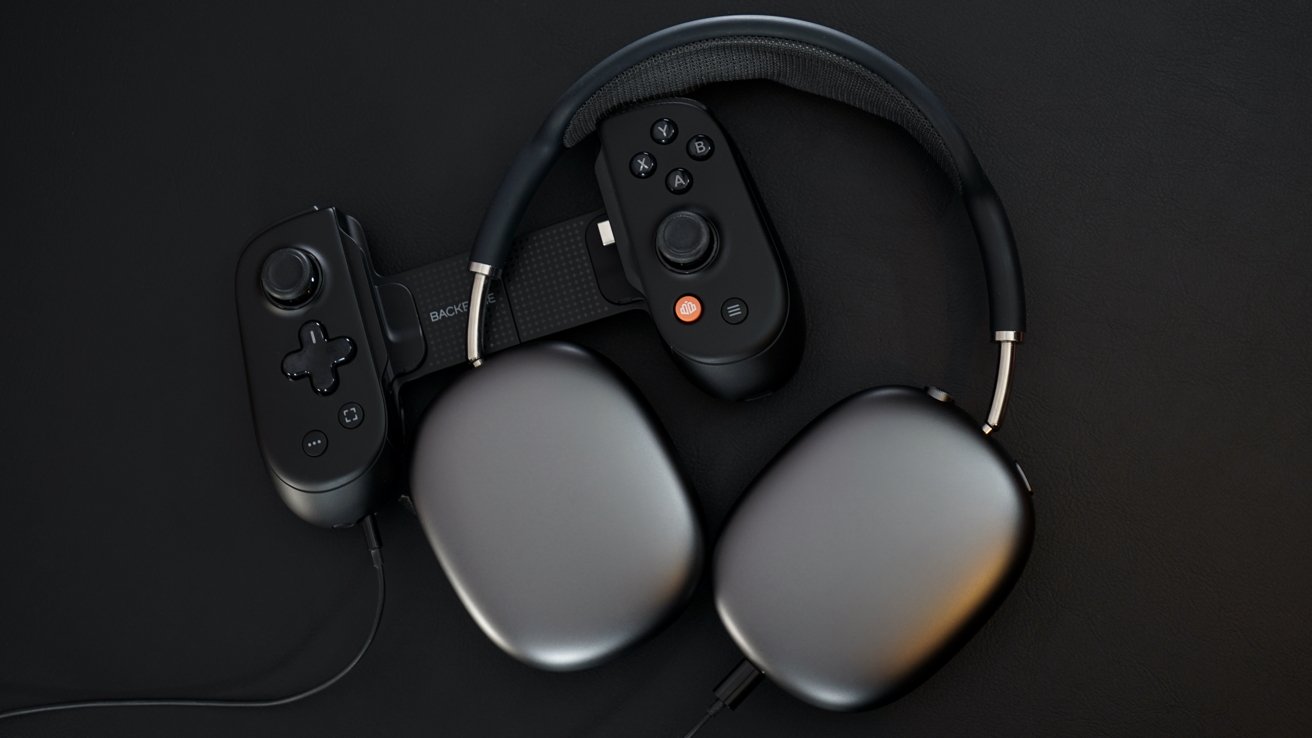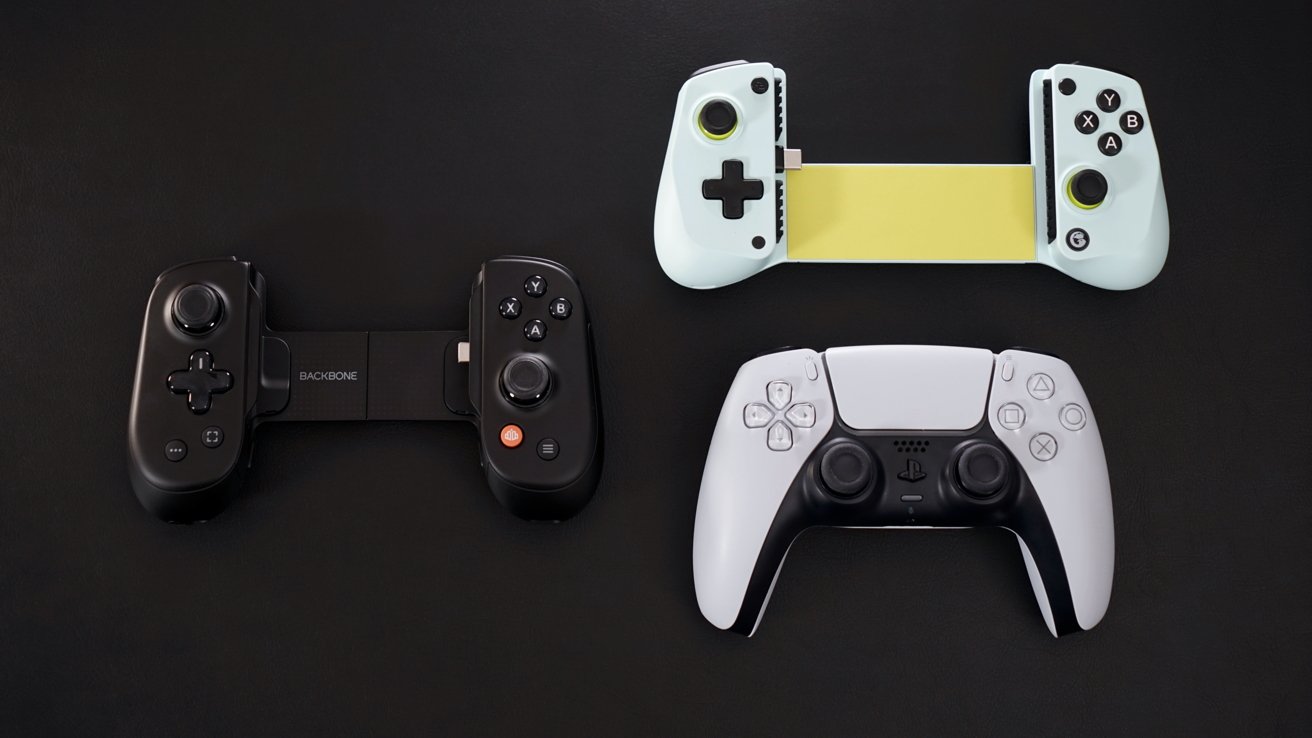Announced on May 6, the Backbone Pro represents everything the company has learned about making wrap-around controllers for iPhone, except maybe how much to charge customers.
I’ve always been a big fan of Backbone. They reinvigorated the wrap-around controller ecosystem with Backbone One, introduced a console-like experience on iPhone via their app, and iterated with fun design choices.
Now, approaching five years since the Backbone One launch, I’m holding the Backbone Pro and can’t help but wonder what the strategy is here. The controller is perfectly designed as an excellent evolution of the original, but the price is too big to ignore.
I’m not saying Backbone shouldn’t earn its profits, but something odd is happening with this controller. I’ve reviewed a lot of wrap-around options since the Backbone One, and the trend has been more support, more customization, and lower prices.
Removing the price from the equation, the Backbone Pro is excellent. Their research into ergonomics yielded a great balance between size, weight distribution, and feel.
However, even this high-priced controller has its flaws, and it leaves me eyeing some of my other recent reviews in comparison. I’m not sure Backbone Pro justifies its price, so let’s get into it.
Backbone Pro review: An evolving market
When the Backbone One first appeared in 2020, it was an excellent return to gaming peripherals for iPhone. It had become a wasteland for gamers seeking good controllers for iPhone, as the previous leading maker, GameVice, had seemingly disappeared at that time.
The $99 price point of the Backbone One felt justified since it used Apple’s MFi program to add Lightning. Plus, the controller was well made and had a game launcher and social ecosystem.
As Backbone grew, it added more features and expanded sharing capabilities. It then introduced a subscription called Backbone+ that is tied to optional app features unnecessary to use the controller.
In the years since that initial launch, Backbone released a USB-C controller, made slight updates to account for increasing iPhone camera bump sizes, and added spacers to adjust for thin cases.
The base model never changed price, so now that a new model has arrived, it is set at a much higher price. I’m struggling to figure out what justifies this move when the market has shifted to much lower cost controllers packed with more features.
I don’t have insight into the company’s finances, but ideally, the Backbone Pro would have taken over at the $99 price point and sent the original Backbone One down to $59. But instead, it is priced $70 higher, making it nearly five times more expensive than one of its competitors.
Backbone Pro review: Design
If you took a top-down look at the Backbone One and Backbone Pro, you might think they are the same controller at first glance. The company refined the design, moved the joysticks slightly, and added a lot of thickness for a better grip.
The center channel where the titular “backbone” is has a new reflective pattern that mimics PlayStation’s DualSense controller. It isn’t a touchpad, but simply something nice to look at when using the controller in Bluetooth mode.
The inclusion of Bluetooth means adding a battery, or batteries in this case. There is a battery on each side, placed strategically to ensure balance in the device’s weight.
A new Bluetooth pairing button has appeared next to the headphone jack. There are also new programmable M1 and M2 buttons placed precisely where your middle finger will rest.
Overall, the design feels amazing. It exactly conforms to my hand in a way other controllers feel obtrusive and almost in the way.
The buttons are clicky but not overly loud. The triggers are larger than before and feature a grip texture.
There are magnetic spacers included with the Backbone Pro identical to the previous model. Cases with moderate thickness or too much of a bottom edge won’t work even with the biggest spacers.
There’s one notable issue I’ve discovered that may be limited to people with my grip or hand size. When pressing the A button, my thumb is resting against the joystick.
This shouldn’t cause any issues in most games, but I worry that more twitch-style games where I’m flying around the control pad could cause inadvertent joystick swings. I made sure to press the bottom button on all the controllers I have at my disposal, and the Backbone Pro is the only one with this issue.
Now, I understand this last complaint is one that is specific to a certain subset of users, but it feels significant enough to point out. The $170 Backbone Pro can’t stretch to fit an iPad mini.
The controller opens about 7 inches, which is just an inch shy of supporting iPad mini. Perhaps Backbone wanted to target the iPhone and Android smartphone market specifically and aimed to make the best Pro controller for that market.
Regardless, this feels like a poor move when universal compatibility seems to be a theme of this new controller. Sure, I can pair the Bluetooth mode with iPad mini, but then I need the iPad mini to sit in a stand to play.
Backbone Pro review: features
The Backbone Pro is packed with features, and many are a first for the Backbone lineup. However, when you look outside of the brand, you see these features are increasingly commonplace.
The larger structure was necessary for better grip and the included batteries, but plenty of other controllers have pursued similar designs. Even the back buttons are no longer pro, as budget Nintendo Switch controllers include them, and they’re a feature of Nintendo Switch 2.
The ability to use the Backbone Pro beyond iPhone thanks to Bluetooth is a great feature. Plus, it goes beyond another controller we tested, the Abxylute S9, and includes batteries to power that Bluetooth connection for 40 hours.
It’s put me in a tough position evaluating the controller. In a vacuum without any competitors, the Backbone Pro would be a victory, even at this price.
However, that’s not the case. The competition is fierce, and it makes the $170 price point a shock.
I grabbed a few controllers that are direct competitors with the device either in features or price. They represent the high end with the Dualsense Edge all the way down to the budget with the GameSir X5 Lite.
| Specs | Backbone Pro | Backbone One | Abxylute S9 | GameSir X5 Lite | DualSense 5 | DualSense Edge |
|---|---|---|---|---|---|---|
| Controller style | Wrap around | Wrap around | Wrap around | Wrap around | Standalone | Standalone |
| Bluetooth | Yes | No | Yes | No | Yes | Yes |
| Wired USB-C support | Yes | Yes | Yes | No | Yes | Yes |
| iPad mini support | Bluetooth Wired |
Wired | Wrap around Bluetooth Wired |
Wrap around | Bluetooth | Bluetooth |
| Headphone jack | Yes | Yes | Yes | No | Yes | Yes |
| Programmable rear buttons | Yes | No | Yes | No | No | Yes |
| Customizable joysticks, face plates, buttons | No | No | Yes | No | No | Joysticks only |
| Controller weight | 204g | 144g | 247g | 137g | 280g | 331g |
| Joystick size (diameter) | 1.6cm | 1.5cm | 1.7cm | 1.3cm | 1.8cm | 1.8cm |
| Works with iPhone cases | Yes, limited | no | Yes | Yes | N/A | N/A |
| Battery life on Bluetooth | 40 hours | N/A | Requires external power | N/A | 6 hours | 5 hours |
| Price | $170 | $100 | $100 | $35 | $80 | $200 |
The 40-hour battery life over Bluetooth is a standout feature that shouldn’t be ignored. Otherwise, this controller fails to stand out in the crowd.
I love the DualSense Edge and its ability to program controller map profiles you can switch between on the fly. Backbone Pro does this too, but you have to set that up and switch within the app.
This feature, plus the Backbone app, make me think the company believes it can position itself as an ultra-premium controller. That places it in a similar market to the competition-focused DualSense Edge, Xbox Elite, and similar customizable controllers.
Beyond that rationale, I can’t understand the price. The controller does feel like it was designed with a lot of research into ergonomics, and it is the best-feeling controller of the wrap-around bunch in this table.
However, the reliance on the iOS app where onboard buttons control similar features for DualSense and Abxylute makes it less convenient or premium. I expect most people buying the Backbone Pro will launch the app once, tinker with some settings, then play games with it as a controller without taking advantage of the other features.
Backbone One review: apps and subscriptions
The Backbone app doesn’t work with any controller but the Backbone ones. That means even if someone downloads the app, they can’t create an account, pay for access via subscription, or join a voice chat with friends.
Even if you own a Backbone controller, set up the app, then use a different controller, the app will not work. It stays in iPhone mode until a Backbone is connected.
The exclusivity is the point. Backbone likely hopes to drive sales through peer pressure, but I’m not sure if it has the social mindshare to actually do so.
Customers are more likely to ignore the app and use in-game chat features, Xbox chat via the Xbox app, or make a call on the phone they’re using to play the game. If people out there like the features of the Backbone app and pay the subscription, great, but all of the features locked behind a paywall on the $100 or $170 controller-connected app come free on game consoles.
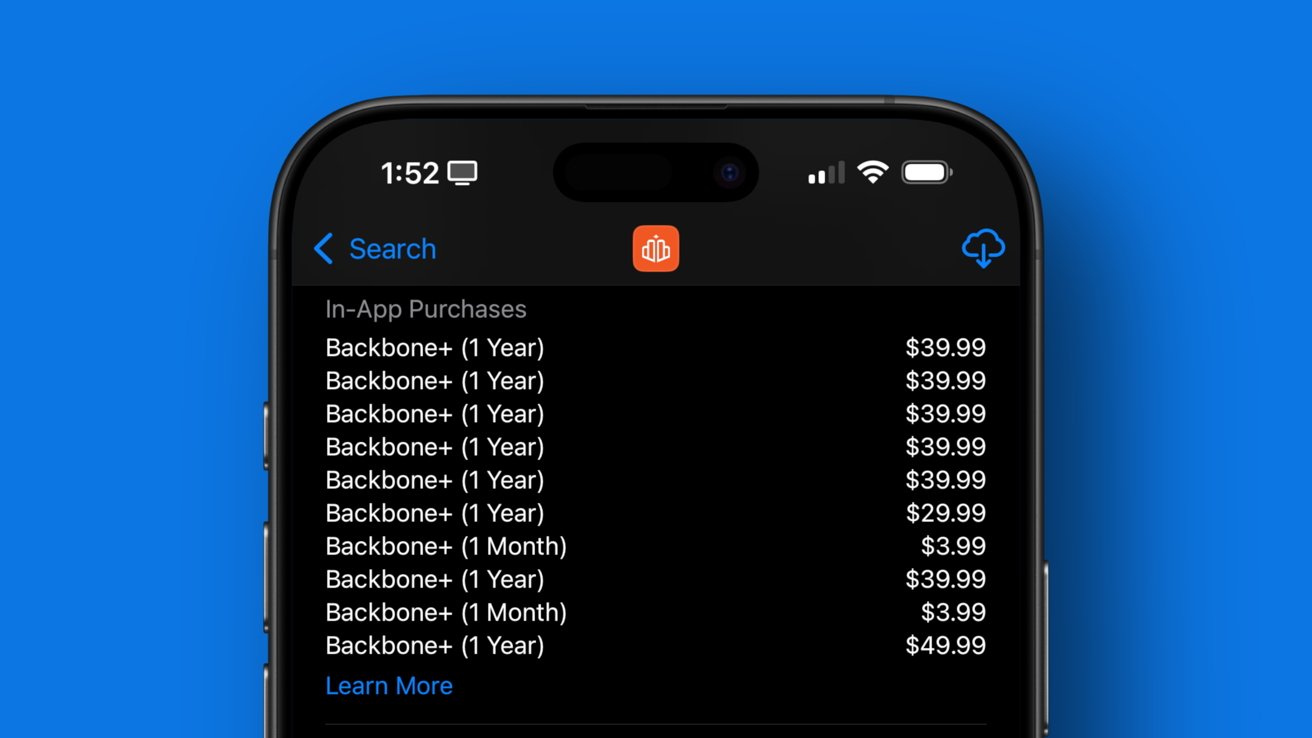
Backbone Pro review: a subscription to unlock additional features in an already expensive controller
It is a $40 per year subscription. That means the price of entry into this particular ecosystem is now $210 for the first year, which is more than the high-end DualSense Edge.
The Backbone app as a launcher is fine. Once you’ve launched a compatible game and pressed the Backbone button to switch to the app, the game is registered to the launcher.
You can navigate through your now playing list, App Store and Apple Arcade recommendations, game streaming services like GeForce Now, and now even emulators.
No, you can’t launch directly into an emulator like Delta, but now you can play NES, SNES, Game Boy, and Game Boy Advanced emulators within the Backbone app if you bring your own ROMs.
While this is neat, it once again seems to miss how people actually play games on their iPhone. I don’t want a limited silo that does a hundred tiny functions, one of them emulation, and do them poorly. I want a highly specific emulation tool that gets regular updates.
One of the key features of the Backbone Pro is the new programmable M1 and M2 buttons. However, there isn’t a way to program those buttons from the controller.
You have two options. Either use Apple’s Settings app to create a controller profile with specific assignments for the buttons that can be set on a per-game basis. Or, you can use the Backbone app to assign actions to the buttons in profiles.
When using the Backbone app’s profiles, they stick even when the iPhone is removed. That way, you can use a custom profile on different devices in Bluetooth mode.
Using the Backbone Pro
Every time I pick up the Backbone Pro, I have to marvel at how it feels in my hand. My thumbs, pointer fingers, and middle fingers rest naturally on the buttons or joysticks without having to seek comfortable angles.
I like that there is a slight lip over the top of the iPhone to keep it from sliding vertically while it is in the controller. However, this does play a part in how limited the Backbone Pro is with case compatibility.
It also doesn’t help that the USB-C plug is a standard length and doesn’t pivot on a hinge. This means instead of attaching the iPhone and sliding it into the controller, you push the iPhone into the controller, then awkwardly align the rigid USB-C plug.
Once everything is up and running, the Backbone Pro feels great in the hand. The whole system with the iPhone isn’t too heavy, and attaching a charger doesn’t make it awkward to hold.
Like I mentioned, my right thumb is basically in constant contact with the joystick. It’s likely not going to affect my gameplay, but I’m sure there are some gamers that will take issue with this — especially the competitive gamers this controller targets.
It is nice that I can use the Backbone Pro as a Bluetooth controller with my iPads, Mac, or Apple Vision Pro. That added versatility means I only need one controller when I travel versus two.
However, it feels like a missed opportunity for the Backbone Pro to not be compatible with iPad mini. I know that means targeting a niche of a niche, but it doesn’t seem to be a challenge for much cheaper controllers, so I can only assume it is a lack of desire to support the platform.
The Backbone Pro and the Abxylute S9 represent the top end of what can be done with a wraparound controller. I’m really excited to see what Backbone tries in the next iteration.
It’s tough to critique the controller itself. Sure, the business model between the price and the app is not ideal, but the controller itself is near flawless.
If I had one desire as a gamer for a future generation is the ability to collapse the controller down even further and have it look like a standard controller when not in use.
Near perfection at a price
I’m fully aware as I write this that I’m criticizing Backbone for doing something very similar to what Apple does with a lot of its products. I own a set of AirPods Max, which are easily $200 more expensive than competing options with similar specs.
That’s why I still think this controller will do well and those in that market with that money will jump on Backbone Pro. It is a good evolution of the first controller, and fans of Backbone that ignore the rest of the market will jump at the chance to get a new and improved model.
For those that make price a high or top priority, they’ll likely bypass Backbone Pro without even looking at it. The Abxylute S9 offers more customization and similar technologies for half the price, and the GameSir X5 Lite is an incredible value at $35.
Those that want a more premium Bluetooth controller for their devices outside of iPhone and iPad mini can buy both the PlayStation 5 Dualsense controller and the GameSir X5 Lite with plenty of money to spare versus the Backbone Pro.
I’m not sure what Backbone’s strategy is by pricing the controller so high. Either the controller development and mass production are so expensive that they can’t turn a profit without that high price, or they believe they need to make up for an expected low volume with a higher price.
Either way, it’s a big ask in such a strong market for such gaming controllers. It is tough for me to recommend the Backbone Pro at that price knowing that the other options exist, even with the excellent design.
Backbone Pro review – Pros
- Exceedingly great ergonomic design
- Soft yet tactile buttons, responsive joysticks
- Hall effect joysticks and triggers
- Programmable extra rear buttons
- Amazing battery life on Bluetooth
Backbone Pro review – Cons
- The price is astronomical
- Limited support for cases
- Can’t stretch to fit iPad mini
- Exclusive app bogged down with social features
- Features standard on game consoles require a subscription
- Some functions require configuration in the app instead of on the controller
Rating: 3 out of 5
Ignoring the price, this is easily a 4.5 out of 5 controller. The requirements to use the app and the built-in restricted social network are just too odd and will always ding this otherwise excellent product.
Where to buy Backbone Pro
Get the Backbone Pro from the Backbone website for $169.99. It is only available in black with the ABXY buttons at launch.


